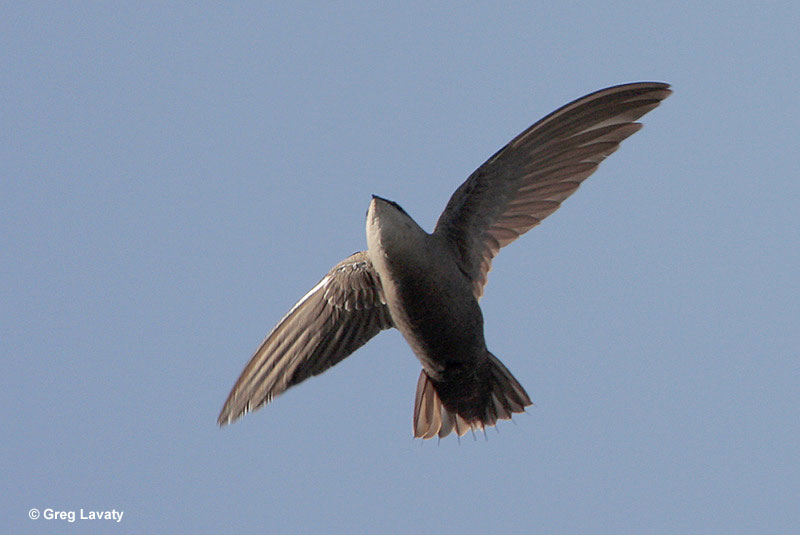Chimney Swifts (Chaetura pelagica) are fascinating birds that spend most of their time flying.
These small, sleek, and speedy birds have long been associated with the iconic image of old brick chimneys, where they roost and nest in large numbers.
However, their populations have been declining over the years due to the loss of nesting sites.
On this page
Identification
Chimney Swift is a small bird that belongs to the swift family and as such is slender with very long, slender, and curved wings, very short legs and tail, and a round head and short neck. The adults measure between 4.7-5.9 inches long, weigh around an ounce, and have a wingspan of 10.6-11.8 inches.
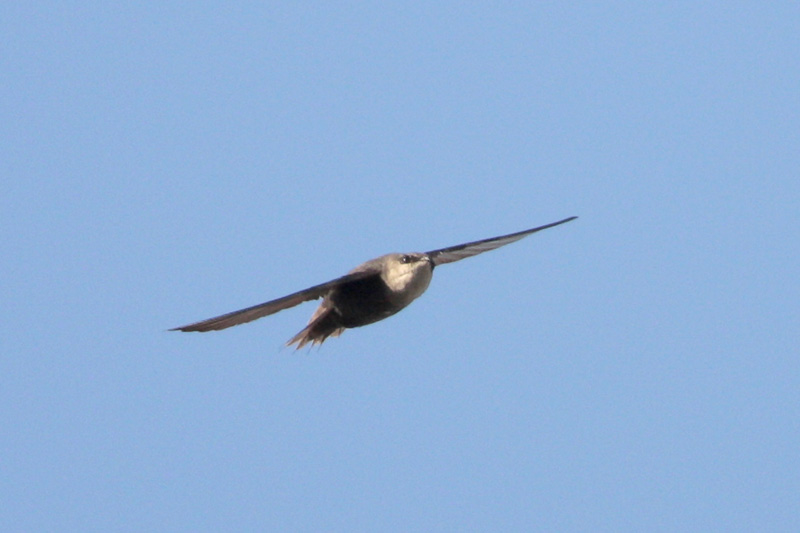
These birds have dark grayish-brown plumage, a pale gray throat, and brown eyes. Both sexes look alike, although male Chimney Swifts are heavier on average. They can appear black when you look at them against the sun. Their tails have short bristle-like tips on them. Juvenile Chimney Swifts look quite similar to adults but have whitish color on their secondaries and tertials.
Chimney Swifts are competent aerialists, able to fly very fast and change direction on a whim. This erratic flight creates an illusion that their wings don’t beat in unison although this is actually not the case. You can see them flying with almost constant and stiff wingbeats, with little to no bend at the wrist. They like to chatter while they fly.
Chimney Swift’s call is a fast buzzy twittering chatter. The high-pitched chips can be spaced apart a bit longer but are still given quite rapidly. Most of these series of twitters are either accelerating or decelerating.
Food
Chimney Swifts are carnivores, specifically insectivores. They feed on flying insects, including beetles, true bugs, moths, bees, wasps, ants, fleas, craneflies, and flies but also spiders and other insects.
In their search and foraging, they may concentrate on swarming insects.
Chimney Swifts forage while flying in loose groups and spend almost all of their life in the air. They fly high during nice weather but very low during wet and bad weather.
Depending on the size of the insect, they either swallow it on the fly or capture it with their bill first. Sometimes, although much less likely, you might see them hovering over branches and picking insects mid-flight.
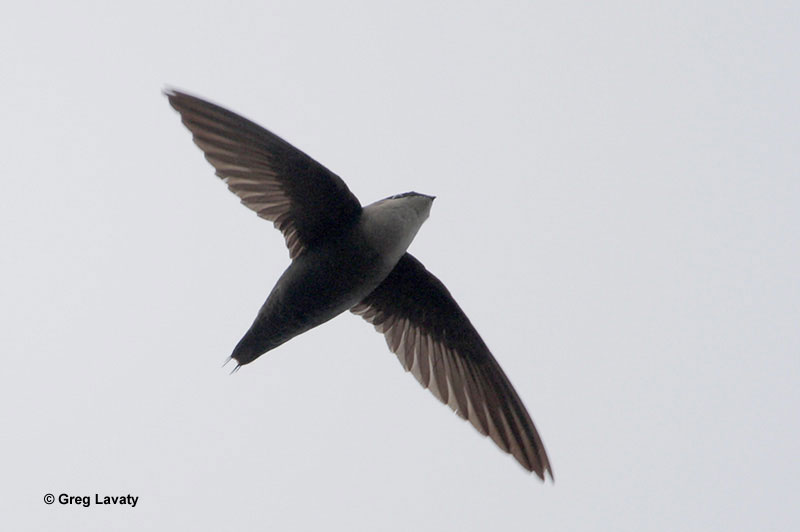
Nesting and Eggs
Chimney Swifts are monogamous and may remain together for more than one breeding season. The pair often has extra helpers to take care of their young.
Chimney Swifts nest in places that have vertical surfaces and low light. Originally, their nesting sites were caves or hollow trees, but now they seem to prefer artificial sites, such as hollow towers or chimneys.
The nest itself is made of twigs glued together with the birds’ saliva in a half-saucer shape. Both parents contribute to building the nest by collecting small twigs with their feet while flying through branches.
The nest is quite small, measuring about 4 inches wide, 2-3 inches long, and 1 inch deep.
The female Chimney Swift lays 3-6 pure white eggs that are less than an inch long and wide. Incubation is carried out by both parents for a period of 16-21 days. Once the young hatch, both parents continue to care for them by regurgitating insects for food. After about 20 days, the young may climb out of the nest and begin to creep up vertical walls, with their first flight occurring at around 28-30 days of age.
Current Situation
Chimney Swifts breed in the eastern side of the United States and winter in northwestern South America. A small part of their range also extends into southeastern Canada.
Chimney Swifts inhabit areas settled by humans and in natural settings, the edges of rivers that are near a forest. You can often see them flying over towns and cities and they spend most of their life flying unless they’re nesting or sleeping during the night.
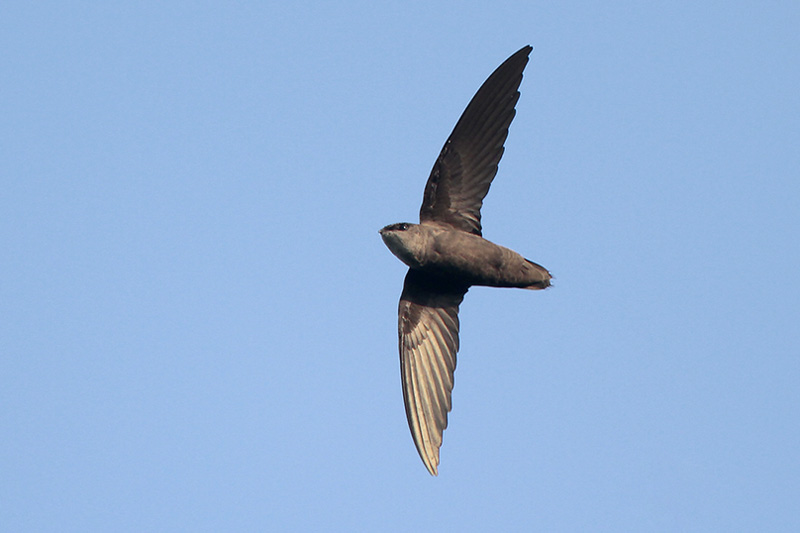
Photograph © Greg Lavaty.
Chimney Swifts are long-distance migrants who migrate from North America to South America for the winter. They migrate in flocks during the day.
Sadly, their population is decreasing, and they’re listed as vulnerable on the IUCN Red List. The main threat is the loss of nesting sites. Since they need vertical surfaces and low light for breeding and nesting, the suitable spots have been diminishing.
Suitable old buildings are being demolished, chimneys capped, and chimney sweeping breaks and removes their nests. In mature old-growth forests, logging and wood harvesting are serious problems since their hollow nesting trees are being felled. Severe weather is also a problematic factor.
Facts
- Chimney Swifts spend most of their life flying unless they’re sleeping or nesting. They bathe by gliding near the surface of the water, bouncing into it, and shaking themselves dry. They don’t even perch but hold on to vertical surfaces with their long claws.
- These birds are often referred to as “flying cigars” due to their cigar-shaped bodies and rapid, darting flight patterns.
- During colder times, Chimney Swifts roost together in a single chimney as to keep the warmth.
- On average, Chimney Swifts live for 4-6 years. The oldest known individual lived for 15 years!
- Chimney Swifts are important insectivores capable of consuming up to a thousand insects in a single day.
Similar Species
Chimney Swifts have quite a few similar species. We’ve listed four of them.
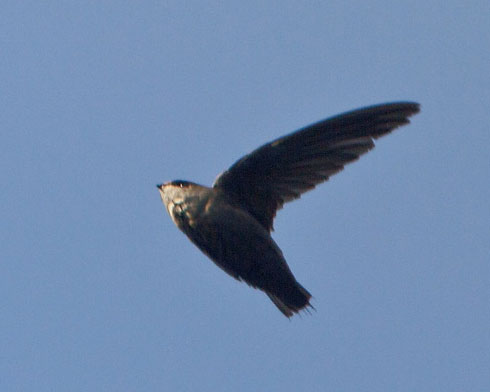
Vaux’s Swift
Although Vaux’s Swifts is nearly identical to Chimney Swifts, their breeding ranges don’t overlap.
Vaux’s Swifts are slightly smaller and lighter in coloring.
Chimney Swifts range in the eastern United States, whereas Vaux’s Swifts are in the western part.
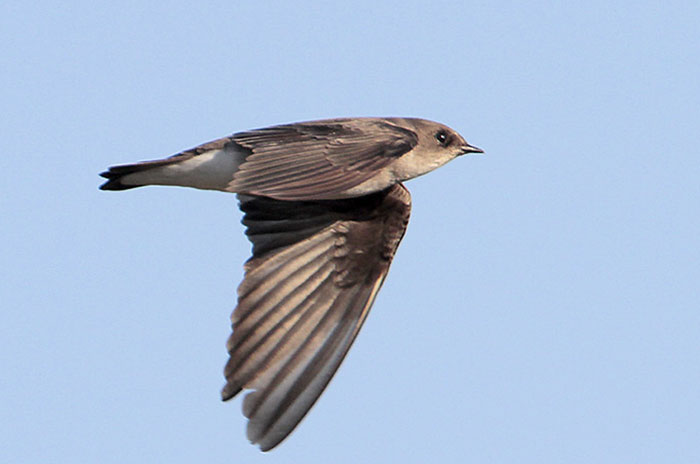
Northern Rough-winged Swallow. Photograph © Greg Lavaty
When it comes to comparing the two, Northern Rough-winged Swallows have light gray to white underparts, whereas Chimney Swifts are dark all over.
The swallow also has shorter and less curved wings.
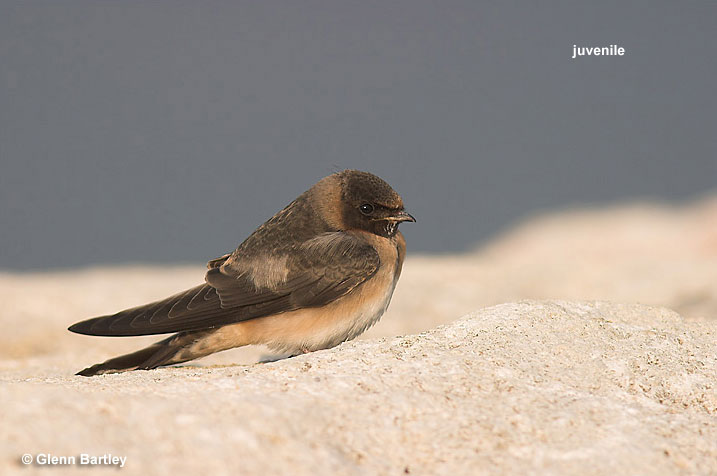
Cliff Swallow
Compared to Chimney Swifts, Cliff Swallows are more colorful and have white underwings and undersides, a rust-colored throat, and dark blue iridescence to their black plumage in the sunlight.
Their tail is longer and rounded.
As with other swallows, their wings are shorter and more triangular.
Frequently Asked Questions
Why are they called Chimney Swifts?
Chimney Swifts got their name from their habit to nest in chimneys.
Are chimney swifts rare?
Chimney Swifts aren’t rare, per se, but they’re listed as vulnerable on the IUCN Red List and their population is in decline due to the loss of nesting sites.
Are Chimney Swifts beneficial?
Chimney Swifts are beneficial to humans since they keep the insect population under control, including mosquitoes.
Do Chimney Swifts come back every year?
Chimney Swifts breed in the eastern United States and winter in northwestern South America. If possible, they do tend to return to the same nesting site.
Are Chimney Swifts active at night?
Chimney Swifts are not nocturnal and sleep at night.

